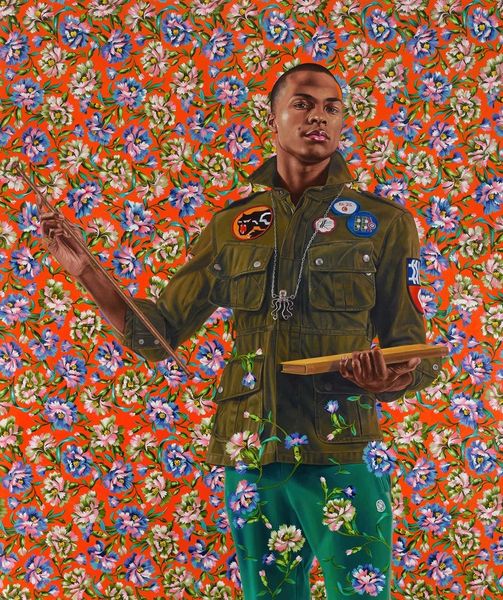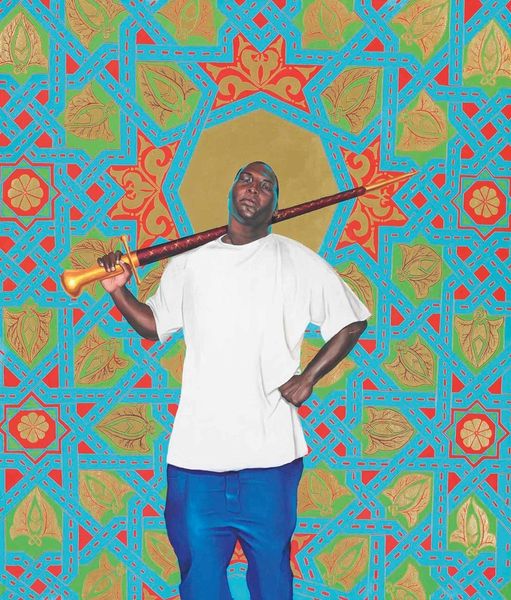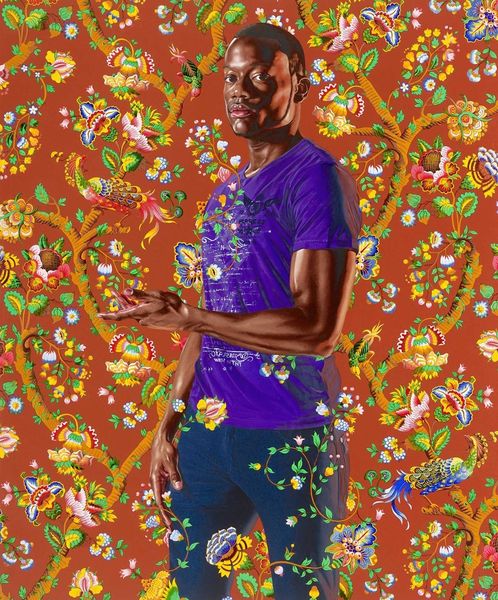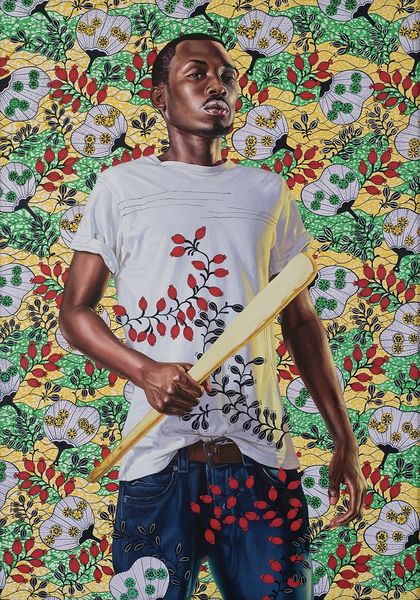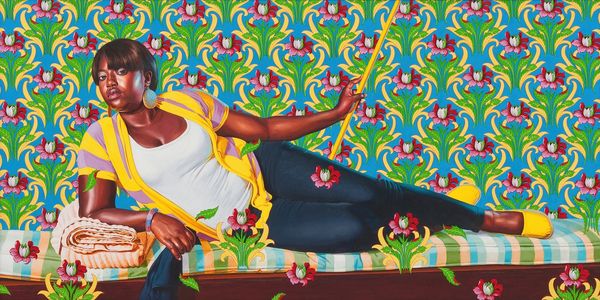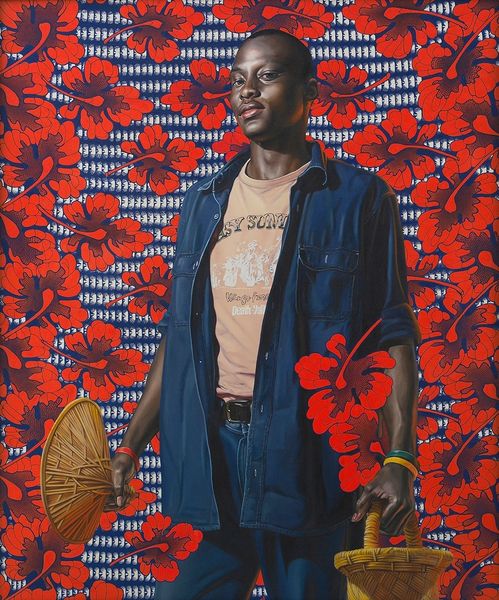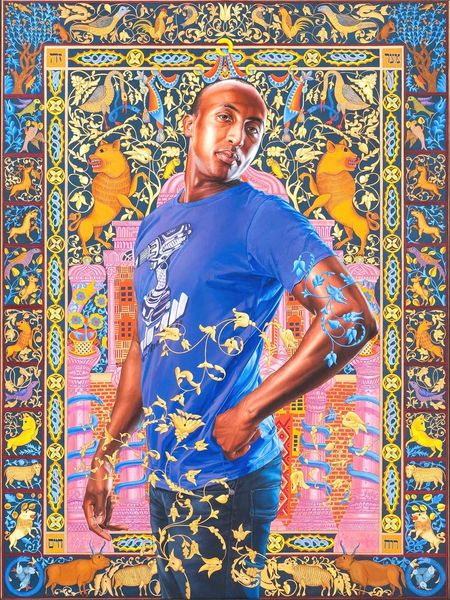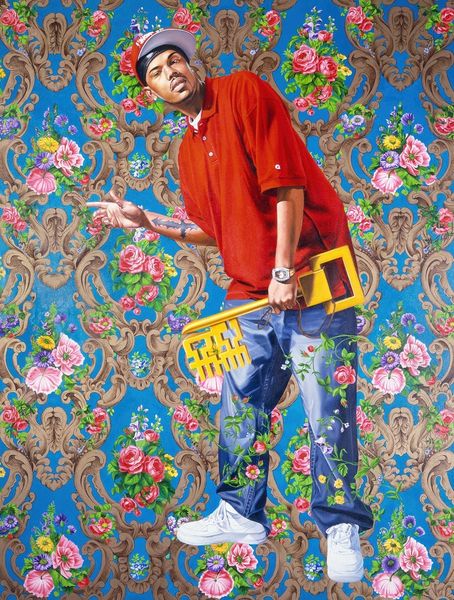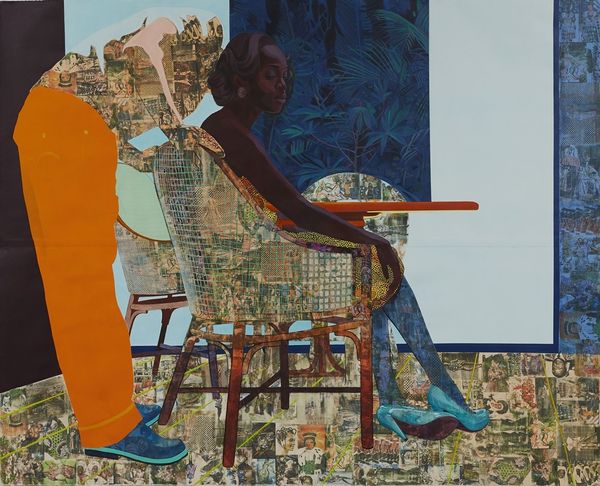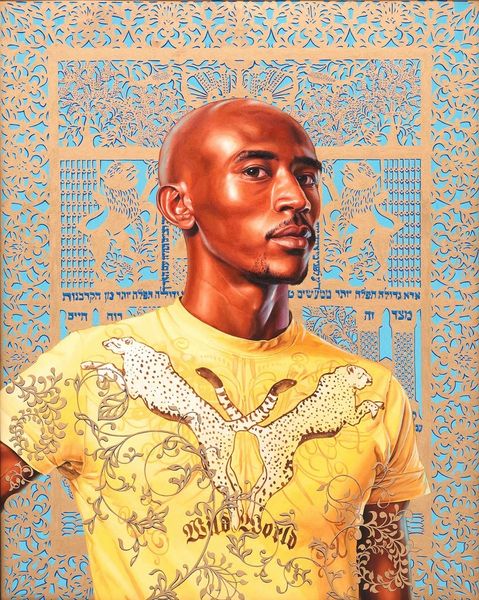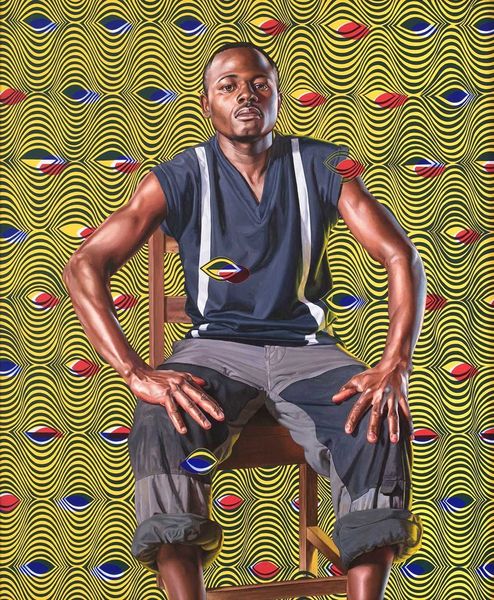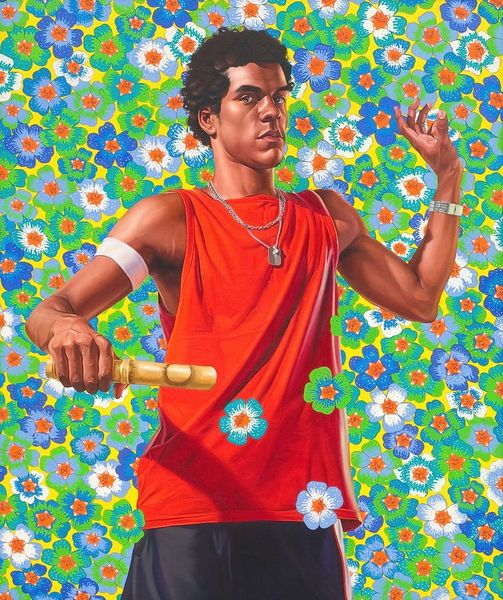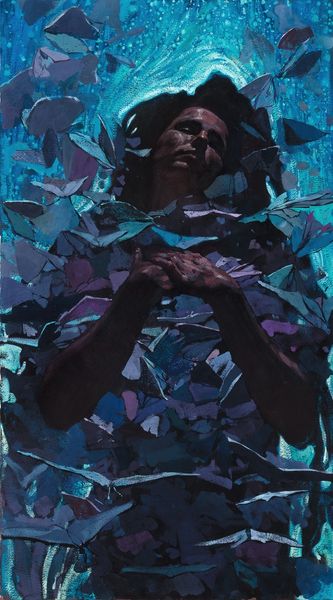
#
pattern-and-decoration
Copyright: Modern Artists: Artvee
Editor: Here we have Kehinde Wiley's 2012 acrylic painting, "Monsieur Seriziat." I'm struck by the subject's direct gaze against the backdrop, with its striking use of colour and repeated leaf forms. What is your perspective on the formal elements at play in this piece? Curator: Certainly. One might initially consider how Wiley employs pictorial strategies such as flatness against depth to investigate notions of power. The ornamental patterning presses forward, flattening the space while simultaneously allowing areas of deep chiaroscuro on the figure to advance, creating a spatial tension. Notice also how his jeans and shirt almost blend into the botanical wallpaper behind. It prompts us to ponder the symbolic load of each motif. Editor: I can see how the flatness complicates depth. I find myself getting lost in the interplay between figure and background. Is this fusion part of a broader theoretical approach? Curator: Precisely. Consider the formal implications. By creating a visual echo between the subject and his surroundings, the viewer is made aware of both visual signifiers of the traditional portrait and is confronted with an individual outside this social and cultural canon. A reading might investigate how he explores race, identity, and the authority communicated through historical portraiture. How does that revised syntax function politically? Editor: That makes me think about the tradition of portraiture, and how Wiley subverts it. I see the repeating pattern as both decorative and symbolic now. Thank you, it gives me so much to think about in my approach to contemporary painting. Curator: It's a painting that benefits from close study, revealing intricate connections. Indeed, Wiley's "Monsieur Seriziat" invites us to deconstruct conventional aesthetics to examine identity.
Comments
No comments
Be the first to comment and join the conversation on the ultimate creative platform.
